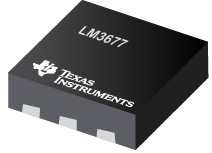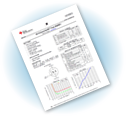3 key Edge Computing considerations for machine builders

While the Edge Computing technology landscape is quite broad, there are several key characteristics that narrow the types of functions that apply specifically to a machine or equipment manufacturer. As OEMs evaluate edge technology to determine how it can decrease friction in the development of new machines, there are a few important considerations that should be evaluated to help ensure success.
By Aric Prost, Sr. Director, OEM At Stratus Technologies
The Benefits of Virtualisation at the Edge
Using virtualisation, applications that typically run on multiple IPCs can be integrated into a single Edge Computing platform. With virtual machines that are built-in and preconfigured in the platform, it is now possible to easily add much more flexibility to machine and equipment operation and monitoring.
Using virtualisation with thin clients, equipment manufacturers can achieve increased flexibility for their customers by having multiple people remotely access data and applications from different mobile devices like cellphones, tablets, and laptops. This autonomous model is preferred and provides customers more options while also being easy enough to use that a field technician can install, configure, deploy, and maintain at a customer’s site.
Preventing Down-time
Rugged construction and redundant capabilities increase machine performance, prevent downtime and improve OEE. Edge Computing platforms in the OT world must be prepared to operate autonomously for long periods of time as often there may be no connectivity to the outside world. They need to have the flexibility to be installed in the control room, control panel, on the shop floor, or directly on a smart machine. Maintenance and support should be simple, offering remote monitoring and self-healing.
When evaluating Edge Computing Platforms, look for an option with redundancy that supports fault tolerant and/or high availability workloads, failure recovery, CPU restart, self-checking, machine diagnostics, remote health monitoring - this simplifies service and support and lowers field maintenance costs.
Decreasing Cost and Increasing Profits
Ultimately, adopting Edge Computing only becomes viable if it meets the stringent cost constraints of the highly competitive markets in which equipment builders play. When evaluating Edge Computing platforms, it is important to consider capital costs as well as development and ongoing costs. In addition to the savings from things like virtualisation, cost is a function of value. More expensive platforms provide a much higher set of value and benefits than simple devices or gateways with lower computing power.
In addition to local drive storage, Edge Computing platforms should provide remote cloud services and be able to store system settings and user preferences to the cloud for simplified system backup, restoration and added profitability.
While implementing Edge Computing may come with an initial cost, many of the capabilities and new applications that Edge Computing platforms support create the possibility of new revenue generating services, or the optimisation of existing service and support capabilities. For example, a trend that is beginning to emerge is the concept of the 'machine as a service' or 'equipment as a service', in which the end customer pays based on time or usage instead of a traditional capital purchase. To successfully implement and maintain such a model, the machine or equipment manufacturer must understand the performance and maintenance profile of their equipment and be able to accurately collect and analyse the appropriate data.
Edge Computing platforms will play an integral role in expanding the traditional control and automation capabilities of equipment. They will also provide the bridge for equipment manufacturers to embrace Digital Transformation initiatives for themselves and to integrate with initiatives of their customers. To learn more about the importance of Edge Computing for machine and equipment builders, download our whitepaper, Smart Factories Need Smarter Equipment.
Similar articles
More from Stratus Technologies
- Unlocking the power of Edge Computing to meet COVID challenges 27th April 2021
- Get the Edge on Smarter Machines 17th March 2021
- 3 key Edge Computing considerations for machine builders 17th March 2021
- Stratus program enables OEMs to develop Edge capabilities 22nd January 2021




 technology at Jacobs Vehicle Systems.JPG)







Write a comment
No comments